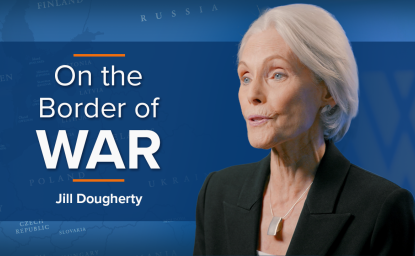Arms Control Expert Discusses Her Research
Centerpoint spoke with Avis Bohlen, a recent Wilson Center public policy scholar who had spent some 25 years working on arms control and European security issues for the U.S. government.
Centerpoint spoke with Avis Bohlen, a recent Wilson Center public policy scholar who had spent some 25 years working on arms control and European security issues for the U.S. government.
Avis Bohlen spent the last eight months as an appointed public policy scholar at the Wilson Center working on a lengthy paper on the rise and fall of arms control. A career foreign service officer, Bohlen most recently served as assistant secretary of State for arms control.
"It's time to rethink the way we do arms control given the new reality of the post-Cold War era," Bohlen told Centerpoint. She said that the reason George W. Bush had been able to withdraw from the 1972 Anti-Ballistic Missile (ABM) Treaty with relatively little criticism was in part because it had outlived its time.
During the Cold War, she said, arms control offered political reassurance to the world at a time of pervasive anxiety about nuclear weapons and had institutionalized a U.S.-Soviet nuclear dialogue, but it had done little to control arms and actually led to increases in defense spending.
"The agreements did not stop the upward growth of weapons on either side," Bohlen said. By the mid-1980s, each side possessed about 11,000 nuclear warheads. Only subsequently, during the Reagan-Gorbachev-Bush era, as the Cold War was winding down, did significant arms control agreements, such as the INF Treaty and the Conventional Forces in Europe Treaty, become possible, providing a mechanism for managing the end of the Cold War.
Other kinds of arms control, she said, are more appropriate for today's world with its threats of proliferation of weapons of mass destruction (WMD), for example the Non-Proliferation Treaty and the Chemical and Biological Weapons Conventions. Although arms control cannot by itself solve the problem of rogue states with WMD any more than strategic arms control could solve the problems of the Cold War, these regimes remain vitally important for establishing norms.
Bohlen began her Foreign Service career at the State Department in 1977 where she worked on the Soviet Desk. She spent much of her career working on arms control and European security issues. Bohlen has served in several notable posts throughout her career, including U.S. ambassador to Bulgaria (1996-1999); deputy chief of mission at the U.S. Embassy in Paris, and deputy assistant secretary of State for European and Canadian Affairs.
Bohlen recounted her involvement in the second Strategic Arms Limitation Treaty (SALT II), signed in 1979 by President Jimmy Carter and Soviet leader Leonid Brezhnev, but never ratified. "We met into the middle of the night with the Soviets over the final issues," Bohlen said. "Not until 3 a.m. was the last page of the treaty initialed."
During the next few days, she recalled, both sides scrambled to type up the documents, which had to be ready for the upcoming summit meeting. She would then learn that having the latest technology does not necessarily put one ahead. Both sides typed-the Russians on typewriters, the Americans on word processors. The American high tech advantage evaporated, however, when it was realized that the special, thicker treaty paper would not fit in their printers. "We wasted a ton of paper and fell behind a day while the Russians, with their old, manual typewriters, pulled ahead."


